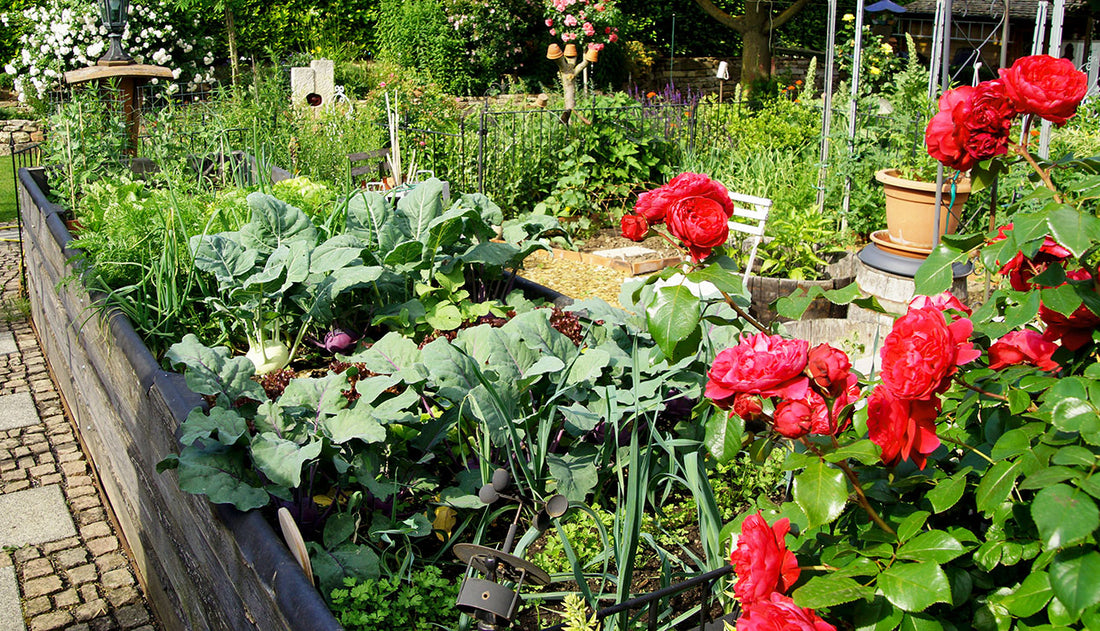Raised beds are a very popular garden form for a lot of good reasons. Gardeners in colder climates love raised beds because the soil warms up faster in the spring, extending the growing season. Depending on the materials used, they can also help cool the soil in hotter zones. Gardeners in very wet or very dry areas loved raised beds because they are easier to manage water drainage and usage. And gardeners with mobility issues love raised beds because there is less bending and stooping. Raised beds can even help gardeners outsmart pernicious weeds like crabgrass and bindweed that can make in-ground gardening a nightmare.

They are perfect for planting flowers, herbs, vegetables, or a mixture of all three! If you have a critter problem, taller raised beds can deter rabbits, ground hogs, skunks, and voles. Unfortunately, chipmunks, deer, birds, and squirrels will still think of your raised bed garden as a wildlife feeding station unless you also fence it in.
Most "store bought" raised beds range from 6-24 inches tall and from 2-12 feet long. They are available in kits made from wood planks, galvanized steel, or recycled composites. For inspiration, check out Frame It All, a pioneer in raised beds, that offers many sizes, shapes and colors. They even have an online 3-D tool to create your own custom design!

Versailles Sunburst Raised Garden Bed from Frame It All
A popular DIY raised bed size is 4x8 because the 4-foot width ensures that you can easily reach every part of the garden and 8-foot lumber is readily available and fits into most vehicles. You can also use less traditional materials like rocks, woven branches, bottles, barrels, or bricks. NOTE: Do not use pressure treated wood for a raised bed if you are growing food unless the wood, and the water that runs off it, will never come in contact with the soil in the garden.
Here are some good tips:
- Fertilize or amend the soil every year. Vegetables in particular use up a lot of nutrients as they grow and you have to replace them to have a healthy crop.
- Test your garden soil every 3 years.
- Site any beds growing vegetables so that they get 6-8 hours of sunlight a day - all season long. Remember that the angle of the sun will change from Spring to Fall.
- Taller beds are great for looking for pests and diseases on the underside of leaves and on stems. Closely planted crops are more prone to some types of mildews, fungi, etc. so good to spot early.
- Try to make them so you can reach everywhere without having to step inside the bed.
- Make the walkways between beds wide enough for a wheel barrow
- Have a source of water nearby.
- Plan for expansion, it's hard to have just one. They are sort of like potato chips in that respect. Place the first bed with a plan to have more,
There are some downsides of raised beds. They can be expensive to construct and fill with quality soil. Planting a raised bed can also be tricky. With limited space, it is tempting to cram in a lot of plants. Advocates of plant spacing guidelines will say that close planting increases pests and diseases and can actually lower yields. Others swear by filling the space with lots and lots of plants. You will have to decide what works best for you. Have two raised beds and try lots of experiments!
Happy Gardening!

